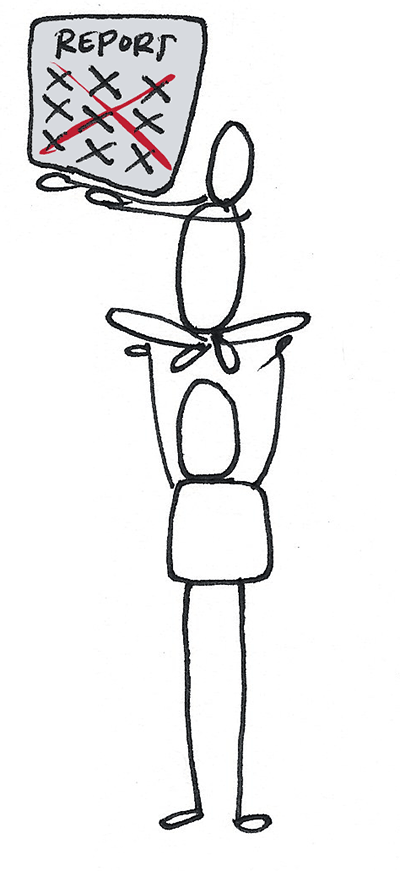
The COVID 19 Project tests the hypotheses that citizens, provided with information and tools can be trusted to address the complex problems in their community and nationally.
Get Involved
TAKE PART IN OUR EFFORT
Citizens and civil society organizations interested in supporting and joining the COVID 19 Project are welcome.
Join us for our online event at the occasion of the beginning of the Citizen Commission (Details to come)
Healthcare system and the hospital setting
The Challenge:
-
To understand the role of the healthcare system's role within the COVID-19 Ecosystem
-
Best Practice
-
Maintaining staff safety
-
Maintain operations
The role of healthcare systems and hospitals in the COVID 19
CDC Current Interim Guidance (Accessed 3/29/20)
Resources for Hospitals and Healthcare
Professionals Preparing for Patients with Suspected or Confirmed COVID-19
To aid healthcare professionals and hospitals, CDC has developed two checklists that identify key actions that can be taken now to enhance preparedness for potential or confirmed patients with coronavirus disease 2019 (COVID-19).
Healthcare Providers Preparedness Checklist
Healthcare Personnel Preparedness Checklist for COVID-19 pdf icon[PDF]
Hospital Preparedness Checklist
Intensive Care
COVID-19 Critical Care Clinical Guidelines
Surviving Sepsis Campaign: Guidelines on the Management of Critically Ill Adults with Coronavirus Disease 2019 (COVID-19)
ccmjournal.org.
8 steps Kaiser Permanente is taking to suppress COVID-19
As states reopen, the need to prevent successive waves of infection remains. Learn how Kaiser Permanente is tackling the newest phase: disease suppression. Read more from the AMA.
A comprehensive, coordinated, evidence based approach to the care of individuals with COVID-19 associated issues in the hospital and healthcare* system (Including outpatient services).
Vision:
All individuals receiving medical care in the medical system are provided frictionless, evidence based, optimal care for their condition.
All hospital staff remain free from COVID 19 infection
Goals and outcomes:
Patients receive the care they need
Staff remain able to provide safe care
Hospital long term situation remains operationally uninterrupted
Best Practice
Resources
Projected Need
Current Supply
Potential Ramp up
Given the safety practices in the hospital, she is seeing a greater likelihood of staff picking up infections at home than at work.
Deborah Yokoe, the medical director of hospital epidemiology and infection prevention at U.C.S.F. Medical Center to Atul Gawande, MD.
The Case Presentation: a vehicle for citizens to collaborate, identify, analyze, develop, implement, and monitor a solution based “treatment plan” for medical problems.
Citizen Briefs:a stand alone document addressing a particular societal challenge and its components
Checklist: a form that facilitates taking action and improves interaction with various stakeholders ad improves your activity.
Data: agree upon, important, easy to use and accessible data that is and relevant.
Tracers: a way to visualize analyze the development over time and response to aspects of the COVID-19
Blogs: a place for information sharing of discussion
Forum: a space for dialogue and deliberation about COVID-19 related issues





The Healthcare System and the Hospital
Personal Protective Equipment: PPE
All emergency department and hospital staff who care for patients infected or potentially infected with COVID-19 should have adequate personal protective equipment including N95 masks or PAPR, gloves, face and eye masks, and gowns.
-
-
Gloves
-
Goans
-
Masks
-
Hospital Resources:
Keeping the Coronavirus from Infecting Health-Care Workers
What Singapore’s and Hong Kong’s success is teaching us about the pandemic.
-
-
Staff: Full-body protective gear, including goggles, complete head coverings, N95 particle-filtering masks, and hazmat-style suits.
-
Clinicians
-
Nurses
-
Respiratory
-
-
Ventilators: Help patients breathe and can be the difference between life and death for those facing the most dire respiratory effects of the coronavirus.
Mechanical ventilators, which help patients breathe or breathe for them, are considered critical to the nation’s effort to contain the worst effects of the pandemic and avoid a crisis like the one Italy is facing.
-
Hospitals confront potential shortage of ventilators to treat patients with coronavirus
-
More lifesaving ventilators are available. Hospitals can’t afford them.
“hospitals are holding back from ordering more medical ventilators because of the high cost for what may be only a short-term spike in demand from the coronavirus epidemic, supply chain experts and health researchers say, intensifying an anticipated shortage of lifesaving equipment for patients who become critically ill.”
-
Who gets a ventilator? Hospitals facing coronavirus surge are preparing for life-or-death decisions NBC News (3/18)
“amid growing fears that the United States could face a shortage of ventilators for coronavirus patients, state officials and hospitals are quietly preparing to make excruciating decisions about how they would ration lifesaving care.”
-
We need more ventilators. Here’s what it will take to get them. (MIT Technology Review) As a Stanford postdoc a decade ago, Matt Callaghan created the designs for a streamlined, low-cost ventilator that hospitals could stockpile, to prepare for the possibility of a global pandemic.
Information for Healthcare Professionals
CDC Current Interim Guidance (Accessed 3/29/20)
Resources for Healthcare Professionals Caring for COVID-19 Patients
CDC’s strategies for optimizing the use of eye protection, isolation gowns, facemasks, and N95 respirators.
-
Evaluating and Testing Persons for Coronavirus Disease 2019 (COVID-19)
-
Ending Isolation for Immunocompromised Persons
-
Clinical Care Guidance
-
Home Care Guidance
-
Guidance for EMS
-
Healthcare Personnel with Potential Exposure Guidance
-
Inpatient Obstetric Healthcare Guidance
-
Interim Infection Prevention and Control Guidance for Dental Settings During the COVID-19 Response

Tracers are designed to “trace” the care experiences that a patient had while at an organization. We use tracers as a way to analyze the organization’s system of providing care for individuals suffering with pain and or substance use disorders.
Pre COVID 19 pandemic
How the hospital and healthcare system respond to the COVID 19 Pandemic
A Time Line
Resources

Solutions through Technology
-
Hospital and Healthcare System Checklist
American Hospital Association's Toolkit : Stem the Tide, addressing the COVID 19 Pandemic
Organizational competence and Culture Change
Reports:

